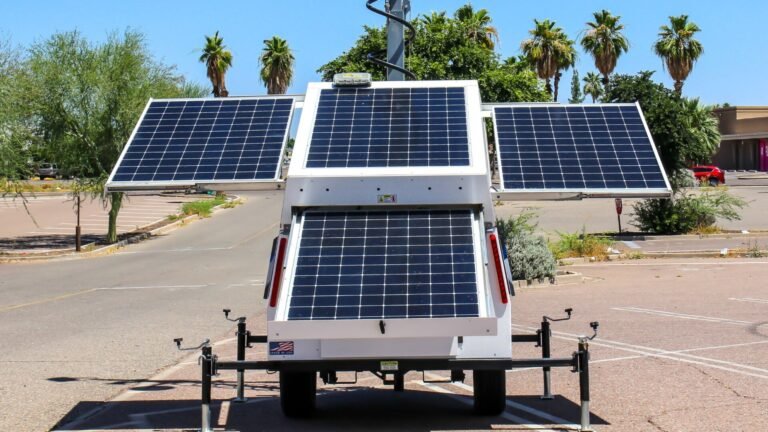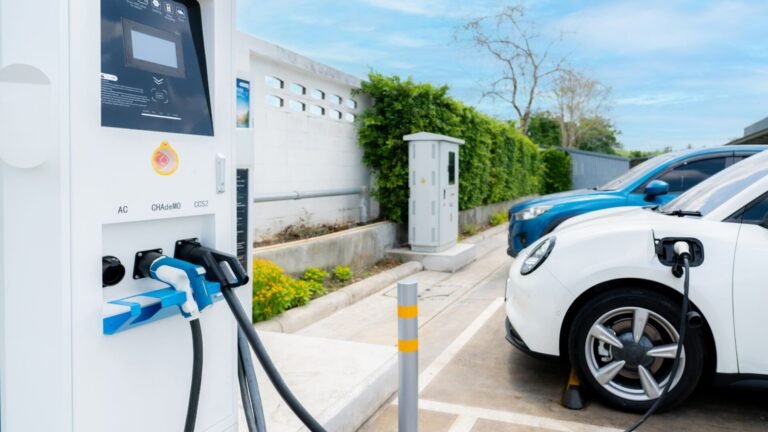The concept of Net-Zero Energy Buildings (NZEBs) has taken center stage in the sustainable architecture movement, embodying the ultimate goal of reducing carbon footprints and promoting energy independence.
These buildings are designed to produce as much energy as they consume over a year, primarily through the use of renewable energy sources like solar power.
However, the true linchpin in the successful implementation of NZEBs lies in advanced solar energy storage solutions.
These technologies are crucial for balancing energy supply and demand, ensuring that the excess energy produced during sunny periods is not wasted but instead utilized effectively during less sunny hours or at night.
As we move towards a greener future, understanding and deploying efficient solar energy storage becomes imperative for architects, builders, and residents alike aiming to achieve net-zero energy status in their buildings.
The Heart of Net-Zero Energy: Efficient Solar Energy Storage:
- Technological Innovations in Solar Storage: Discuss the latest advancements in solar energy storage technologies, focusing on cutting-edge developments such as lithium-ion batteries, flow batteries, solid-state batteries, and thermal storage systems.
These innovations have significantly improved energy density, allowing for more energy to be stored in smaller spaces, and enhanced the overall efficiency and lifespan of storage solutions, making them more viable and cost-effective for Net-Zero Energy Buildings (NZEBs).
Furthermore, the introduction of smart management systems and software has revolutionized how energy storage integrates with building energy systems, enabling more precise control over energy flow and optimization of consumption patterns.
The rapid progression in materials science and engineering has also led to the development of more sustainable and less hazardous components, contributing to the environmental and economic viability of solar storage solutions.
This surge in technological innovation is instrumental in overcoming previous barriers and propelling the adoption of solar energy storage in the pursuit of net-zero energy goals. - Integration with Solar PV Systems: Explore strategies for integrating storage solutions with solar photovoltaic (PV) systems in buildings, emphasizing the critical nature of seamless integration for optimizing energy use, reducing waste, and ensuring a continuous power supply, especially during outages or adverse weather conditions.
The integration process involves smart energy management systems that can dynamically adjust energy storage and release based on real-time demand and supply.
As of 2024, statistics indicate that buildings employing integrated PV and storage systems can reduce energy costs by up to 40%, while significantly enhancing energy independence from the grid.
Advanced software and hardware interfaces have made it possible for these systems to predict energy needs, thereby maximizing the efficiency of energy consumption and storage.
This integration not only supports the grid in maintaining balance and reducing energy waste but also plays a pivotal role in achieving net-zero energy status by ensuring that the excess energy produced during peak sunlight hours is effectively stored and used during periods of low sunlight or high demand. - Cost Reduction and Incentive Programs: Provide insights into the economic aspects of solar energy storage, including recent trends in cost reduction, where the price of solar batteries has dropped significantly, by over 50% in the past five years alone, making them increasingly accessible.
Additionally, discuss the availability of government or utility incentives, such as tax credits, rebates, and grants, which can further reduce the upfront costs of solar storage systems.
Highlight specific programs and their impact, such as the Investment Tax Credit in the United States, which offers a 26% tax credit for solar energy systems installed by 2022-2023, including storage when paired with solar PV.
This has led to a surge in installations, making solar storage solutions more accessible to a broader range of buildings.
Furthermore, addresses regional variations in incentives and how they influence the adoption rates of solar energy storage systems, emphasizing the importance of local policies in driving the market forward and making sustainable energy solutions more economically viable for property owners and developers. - Case Studies of Successful NZEBs: Present real-world examples of buildings that have successfully implemented solar energy storage solutions to achieve net-zero energy status.
Highlight projects such as the Bullitt Center in Seattle or the Edge in Amsterdam, detailing the specific solar and storage technologies used, the integration strategies, and the resulting energy efficiencies.
Discuss the challenges faced during implementation, such as technical integration, financing, and user adoption.
Share solutions that were implemented to overcome these obstacles, such as innovative financing mechanisms, stakeholder engagement, and adaptive building designs.
Extract lessons learned from these pioneering projects, emphasizing the importance of holistic design, stakeholder collaboration, and the role of continuous monitoring and optimization in achieving and maintaining net-zero status.
Additionally, provides insights into the scalability and replicability of these solutions in different climates and building types, underlining the universal applicability and potential of solar energy storage in achieving net-zero energy buildings globally.
Overcoming Challenges:
Address the current obstacles to the widespread adoption of solar energy storage in NZEBs, including high upfront costs, which can average between $500 to $1,500 per kWh for lithium-ion battery systems; technical limitations like energy density and battery degradation; and regulatory hurdles such as grid interconnection policies and building codes.
Highlight the importance of addressing these challenges to facilitate broader adoption.
Looking Ahead:
Discuss potential solutions and future prospects for overcoming these challenges. Explore ongoing research aimed at increasing the energy density and lifespan of batteries, which could significantly reduce lifecycle costs.
Examine policy changes, such as financial incentives or subsidies, which could lower the initial investment for solar storage systems.
Highlight market developments, such as the growth of the global solar energy storage market, projected to reach $8.4 billion by 2025, and the introduction of more user-friendly and integrated storage solutions.
These advancements could make solar storage more accessible, efficient, and a standard feature in net-zero energy buildings.
Conclusion:
Reiterate the critical importance of solar energy storage in achieving net-zero energy buildings (NZEBs) and its pivotal role within the broader framework of combating climate change and advancing sustainable development goals.
Highlight how solar storage is integral in transitioning buildings from being mere energy consumers to becoming active energy producers, contributing positively to the energy grid.
Emphasize the urgent need for continued innovation in storage technologies, increased investment from both public and private sectors, and stronger collaboration among stakeholders, including governments, businesses, and communities, to overcome existing barriers and realize the full potential of NZEBs.
This collaborative effort is essential for paving the way towards a more sustainable, energy-efficient, and resilient future, where buildings not only meet their own energy needs but also contribute to the overall reduction of greenhouse gas emissions.






